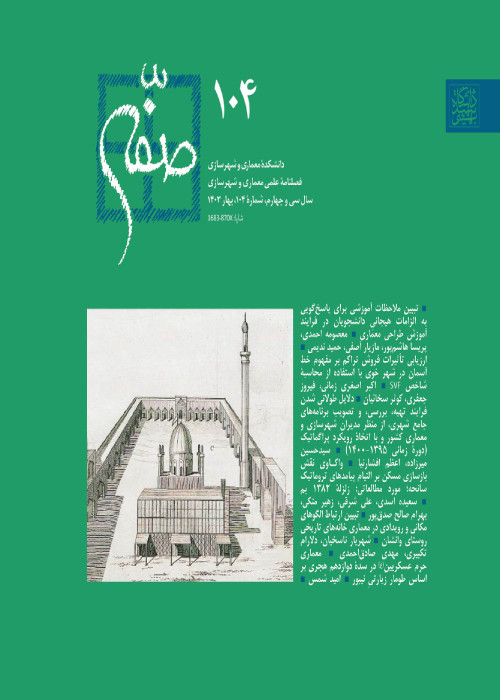A New Approach to Drawing 10 Point Girih Motifs Using Baseline Method
Decorations in Islamic art are often built on combinations of repeated squares and circles, which may be overlapped and interlaced to form intricate and complex patterns. Based on the shapes drawn from the circle, the earliest geometrical forms in Islamic art were occasional isolated geometric shapes such as 8-pointed stars and lozenges containing squares. These date from 836 in the Great Mosque of Kairouan, Tunisia, and since then have spread all across the Islamic world. In 1086, 7 and 10 point girih patterns (with heptagons, 5 and 6 pointed stars, triangles and irregular hexagons) appear in the Jameh Mosque of Isfahan. 10 point girih became widespread in the Islamic world and this kind of girih (10 point girih) is the subject of this paper. Girih are elaborate interlacing patterns formed of five standardized shapes. The style is used in Persian Islamic architecture and also in decorative woodwork. Girih designs are traditionally made in different media including cut brickwork, stucco, and mosaic faience tilework. In architecture, girih forms decorative interlaced strap work surfaces from the 15th century to the 20th century. Most designs are based on a partially hidden geometric grid which provides a regular array of points; this is made into a pattern using 2-, 3-, 4-, and 6 fold rotational symmetries which can fill the plane. The visible pattern superimposed on the grid is also geometric, with 10 and 12 pointed stars and a variety of convex polygons, joined by straps which typically seem to weave over and under each other. A recurring motif is the 8-pointed star, often seen in Islamic tilework; it is made of two squares, one rotated 45 degrees with respect to the other. The fourth basic shape is the polygon, including pentagons and octagons. All of these can be combined and reworked to form complicated patterns with a variety of symmetries including reflections and rotations. Such patterns can be seen as mathematical tessellations, which can extend indefinitely and thus suggest infinity. As it cited above, in this article, the method of 10 point girih drawing is essayed and in order to maintain and ease the use of this lasting legacy in contemporary Iranian Islamic architecture, the question arises as to how to minimize the tools and stages of 10 point girih drawing, invented a method for drawing schematics in addition to speeding up the practice of drawing and applying motifs. Authors, in response to this question, have developed a method called the baseline method (eighteen – eighteen Method), which presented an original pattern for drawing 10 point girih motifs. The most difference between this new method and traditional method is that in this method, girih would been drawn without using circle and compasses which results in a higher speed for girih drawing. In this research, a combinative method has been used; the data collection is based on library documentation studies, and a kind of logical methodology based on mathematical relationships and mathematical proportions, is used for presenting a suitable model for drawing 10 point girih.
- حق عضویت دریافتی صرف حمایت از نشریات عضو و نگهداری، تکمیل و توسعه مگیران میشود.
- پرداخت حق اشتراک و دانلود مقالات اجازه بازنشر آن در سایر رسانههای چاپی و دیجیتال را به کاربر نمیدهد.


